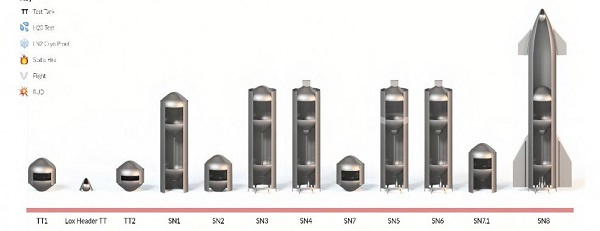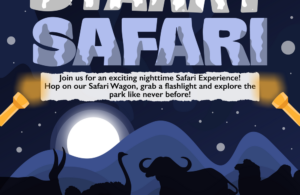- South Texas Students Meet Accordion Music Icons Los Tigres Del Norte In Edinburg Thanks To Khs America/Hohner Alianza Académica Initiative
- Fragile Planet Offers a Nighttime Wildlife Experience
- Falcons Soccer Off & Running
- Cameron County Receives Funds to Improve Two Parks
- Falcons Complete First Half of 32-6A
- School District to Help out Victims of California Wildfires
- Sand Castle Days Continued Despite Unexpected Weather
- Ready for District
- Discussion of Garbage Dumpster Rates, Agreements Between State & City on Highway Regulations, and More
- 31st Annual Shrimp Cook-Off is Right Around the Corner
Starship SN9 rolled to launch site
- Updated: January 16, 2021


by Chris Bergin
nasaspaceflight.com
SpaceX Boca Chica is now transitioning towards the next launch campaign, with Starship SN9 rolled out to the launch site on Tuesday. There remains a slim chance SN9 will be ready to launch before the end of the year, repeating the flight profile that almost saw SN8 return in one piece.
SN9’s campaign comes ahead of an untold number of launches in 2021, with a total of nine Starships in various stages of production, along with the first Super Heavy prototype.
Starship SN8 beat expectations, completing numerous milestones before a loss of thrust in the landing burn’s final seconds concluded the flight with a fireball.
Clean up operations are continuing at the landing site, with just the almost-intact nosecone yet to be moved from its resting place. Elon has intimated the nosecone will be preserved in honor of SN8’s incredible achievement.
It was always part of the plan to move on to the SN9 launch campaign immediately. However, while SN9 was waiting for rollout from the High Bay, a transport mount collapsed.
This caused SN9 to topple into the High Bay sidewall, damaging aero surfaces on the nosecone.
That has resulted in several days of remedy work, including the use of an aero surface that was originally designated for SN10’s nosecone – which itself is undergoing mating operations inside the Wind Break facility.
This multi-flow processing mandate at SpaceX Boca Chica allows for the goal of launching numerous prototype Starships to refine the flight profile, with SN9 still expected to fly to 12.5 km before a likely push to the original goal of between 15 and 20 km with a future Starship – pending the results of the SN9 flight.
With SN9 now repaired and released from the grip of the Liebherr LR1600/2 Crawler Crane “Tankzilla” – which rushed to the rescue of SN9 to allow for a replacement stand to be installed in the High Bay – rollout to the launch site could then take place.
Tankzilla first made the slow roll down Highway 4 on Monday, followed by the roll of SN9 operations on Tuesday.
This is the first time a fully-integrated Starship had been rolled down Highway 4, with its nosecone already mated and with Raptor engines already installed. It appears two Raptors were installed for the rollout, with a third arriving at the launch site on Wednesday morning.
A refined pre-launch flow will follow, likely requiring only a single cryo-proof testing run with Liquid Nitrogen, followed by a triple-Raptor Static Fire test.
Pending the results of those tests and the required clearance to proceed toward the launch, SN9 is expected to take to the air either side of the New Year, potentially before 2020 comes to an end.
Although Starship’s achievements in 2020 have been impressive, 2021 promises to be a banner year to develop the first fully and rapidly reusable interplanetary launch system.
Once SN9 has departed the High Bay, SN10 is expected to take up residence before receiving the nosecone currently being mated in the Wind Break.
In turn, that will allow for SN11 – currently in the Mid Bay with SN10 – to gain a new neighbor, namely SN12.
All of the required sections, and even a nosecone, have been spotted by Mary (@bocachicagal), with just stacking operations – which takes place inside the Mid Bay – to come.
Future Starships post-SN12 are also lining up for their turn in the Mid Bay, with the latest section to be spotted belonging to SN17. Mary (@bocachicagal) caught the Aft Dome Sleeve out in the open, waiting to meet its SN17 comrades that are likely being prepared inside some of the “Big Tent” production facilities.
However, somewhat more exciting than the observation of nine new Starships is the continued staging of numerous sections for the first Super Heavy prototype.
BN1 (Booster Number 1) has been noted for several weeks now, with two sections already moving to the High Bay, a facility that was specifically built for Super Heavy stacking, as much as its space is being utilized by the ability allow for the nosecone stacking at the Production site for SN9.
Seven sections of Super Heavy have now been identified, ready to join the two sections already located in the High Bay. This past week’s most notable Super Heavy processing milestone was the sleeving of the Forward Pipe Dome section.
While some observers believe Super Heavy stacking won’t take place until a new overhead gantry crane is installed into the facility, there remains the potential one of SpaceX Boca Chica’s impressive cranes could provide the interim role via the use of load spreaders, as have been employed during Starship stacking operations.
Starship operations will keep SpaceX busy for the early months of next year before Super Heavy enters the fray and makes its own trip down Highway 4 – although this time to its own launch site closer to the beach.
Work on the Orbital Launch Site has been ongoing, focusing on the area surrounding the new mount that will host BN1 ahead of its test launch.
That launch is expected to be a short hop, akin to SN5 and SN6’s tests, per the only time Elon Musk has referenced it on Twitter – who also noted the launch would involve two Raptors. Plans may have changed since.
The ability to cater to this high cadence launch campaign will depend on the amount of Raptor engines that can be supplied, and/or survive upcoming tests.
Raptors are initially test-fired at SpaceX McGregor. The latest fly-past from NSF member Gary Blair (L2 McGregor Section) showing two Raptors have been removed from both the vertical “Tripod” test stand and Horizontal test stand, with one Raptor remaining on the latter.
New engine testing is understood to be in the late SN50 to early SN60 range – although repaired, retested engines can often be seen on the stands.
However, it can be summarized that SpaceX already has a good number of Raptors for upcoming testing, with more Raptors likely making their way through SpaceX’s manufacturing center in Hawthorne, California.



